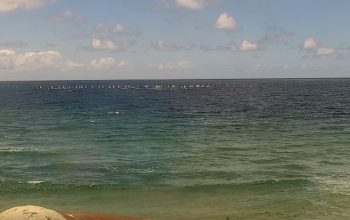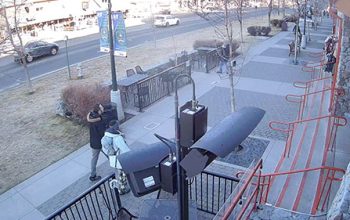
Things to Do in Venice Beach in Los Angeles, California
Explore the Famous Venice Beach Boardwalk
The Venice Beach Boardwalk is the heartbeat of Venice. Stretching along the coast, it is filled with street performers, artists, and colorful vendors. You’ll see dancers, musicians, magicians, and even performers doing daring acts with broken glass and snakes. Shops sell everything from sunglasses to souvenirs. Food stands offer pizza, hot dogs, and refreshing drinks. It’s lively, it’s crowded, and it’s unforgettable.
If the energy gets overwhelming, don’t worry. You can simply move a few blocks away to find quieter streets and sandy spots.
Work Out at the Iconic Muscle Beach
Right next to the Boardwalk, you’ll find Muscle Beach. This outdoor gym has a long history. Famous bodybuilders like Arnold Schwarzenegger and Lou Ferrigno trained here. Today, it’s still active. Visitors love to watch athletes pump iron under the California sun.
If you want to join in, daily passes are available for just $10. Even if you don’t plan to work out, it’s fun to snap a few pictures and soak in the vibrant energy.
Stroll Along Venice Beach Pier
Located at the end of Washington Boulevard, the Venice Beach Pier is a hidden gem. It doesn’t attract as many visitors as other famous piers in Los Angeles, which makes it perfect for a relaxing walk.
You can fish, watch surfers catch waves, or simply enjoy a breathtaking sunset. Since it’s a bit away from the hustle of the Boardwalk, the atmosphere is more peaceful.
Swim and Sunbathe at the Beach
Venice Beach stretches nearly three miles, offering plenty of room to swim, sunbathe, and relax. The beach is wide, with soft sand perfect for laying out a towel. Lifeguards are on duty, making it a safe spot for swimming.
For surfers, the Venice Breakwater is a prime surf location. It’s one of the top spots in Los Angeles to catch a wave.
Bike or Skate Along the Ocean Front Walk
The Ocean Front Walk runs parallel to the beach and is buzzing with activity. Rent a bike or a skateboard and cruise along the scenic trail. You’ll pass murals, performers, and small shops.
The flat terrain makes it easy for beginners and pros alike. It’s a great way to explore more of Venice Beach without getting stuck in the crowds.
Play Beach Volleyball
If you’re into sports, Venice Beach has several volleyball courts right on the sand. Bring a ball and a few friends, or join a casual game already in progress.
It’s a fantastic way to meet new people and stay active while soaking up the sun.
Watch Skateboarding at the Venice Skatepark
Near the beach, you’ll find the Venice Skatepark. It’s one of the coolest places in Los Angeles to watch skilled skateboarders show off their tricks.
The park is open to the public, and you’ll often see both pros and amateurs riding the bowls and ramps. Whether you skate or just watch, it’s a must-see.
Discover Local Art
Venice Beach is also a hub for artists. Walk along the Boardwalk and you’ll find local painters, sculptors, and craftsmen selling their work.
There are also colorful murals everywhere you look, adding to the area’s unique vibe.
Eat at Ocean Front Walk Cafes
After exploring, you’ll probably be hungry. Luckily, the Ocean Front Walk is packed with cafes, restaurants, and food stalls. From seafood to vegan dishes, there’s something for every taste.
Many spots offer outdoor seating, so you can enjoy your meal while watching the vibrant scene around you.
Final Thoughts
Venice Beach in Los Angeles is truly one of a kind. It offers a little bit of everything — art, fitness, beach activities, and endless people-watching. Whether you spend a few hours or an entire day, you’re bound to leave with unforgettable memories.
The History of Venice Beach
Early Land Grants and Rancho Days
In 1839, a vast area known as La Ballona was granted by the Mexican government to Ygnacio and Augustin Machado and Felipe and Tomas Talamantes. This land included the southern parts of what is now Venice. Eventually, La Ballona became part of Port Ballona, which would lay the groundwork for future development.
The Vision of Abbot Kinney
Venice Beach, once called “Venice of America,” began in 1905. Abbot Kinney, a wealthy tobacco mogul, dreamed of building a seaside resort that mirrored the romantic canals of Venice, Italy. Years earlier, in 1891, Kinney and his partner Francis Ryan had bought two miles of oceanfront property south of Santa Monica. They first developed a northern section called Ocean Park.
However, after Ryan’s death, Kinney acquired the southern marshy land. After winning a coin toss with his new partners in 1904, Kinney took full control of the property and pursued his vision for a resort town.
The Birth of Venice of America
On July 4, 1905, Venice of America officially opened. To transform the marshlands, Kinney dug several miles of canals to drain the area. He built a 1,200-foot pier featuring an auditorium, a ship-themed restaurant, and a dance hall. He also designed a business district with Venetian-style arcades. Artist Felix Peano sculpted decorative columns, adding to the area’s charm.
Tourists flocked to the new attraction. Most arrived by the Pacific Electric Railway’s “Red Cars,” then toured the town on miniature railways and gondolas. The one-mile beach, with its soft sands and gentle slope, became the star attraction. Small cottages and housekeeping tents gave visitors affordable lodging options.
Rapid Growth and Popularity
By 1910, Venice had a population of over 3,000 permanent residents. On weekends, crowds between 50,000 and 150,000 visited the town. Clearly, Kinney’s dream had struck a chord. Venice quickly became one of the most popular destinations in Southern California.
Rise of the Amusement Pier
Abbot Kinney wanted to entertain his visitors. He expanded the amusement offerings on the pier. By 1910, the Venice Miniature Railway, a public aquarium, and thrilling rides like the Virginia Reel and Racing Derby delighted guests. Aviator B.H. DeLay even performed daring aerial stunts over the beach, making Venice a pioneer in early aviation history.
As the town grew, however, politics became messy. Competing business districts sprang up, and Venice lacked a central authority. Kinney himself maintained order until his death in 1920. Without him, Venice struggled to stay unified.
Challenges After Kinney’s Death
Only weeks after Kinney died, a fire destroyed the amusement pier in December 1920. Coupled with the economic blow from Prohibition, the town’s finances suffered badly. Still, the Kinney family rebuilt the pier, adding bigger and better attractions. By 1925, Venice boasted three roller coasters, a Flying Circus aerial ride, and a Fun House, making it one of the best amusement destinations on the West Coast.
During this period, nearby Ocean Park also developed piers, pushing Venice into fierce competition for visitors.
Political Problems and Annexation
By 1922, Venice faced political scandal. City treasurer James T. Peasgood was convicted of embezzlement. Meanwhile, the town’s infrastructure—roads, water systems, and sewage—needed serious upgrades.
Faced with these problems, Venice voted to consolidate with Los Angeles in November 1925. In 1926, the merger became official. Venice was now part of a larger city, but unfortunately, attention and investment from Los Angeles remained limited.
The Oil Boom and Environmental Damage
In 1929, oil was discovered on the Venice Peninsula. Quickly, the area filled with over 450 oil wells. For a short time, oil money boosted the local economy, which was struggling during the Great Depression. However, drilling waste severely polluted the remaining canals and beaches.
Most wells were capped by the 1970s, but the environmental damage took a lasting toll on Venice.
Neglect and Decline
After annexation, Los Angeles showed little interest in maintaining Venice’s unique character. The famous canals were filled in and paved over. The once-beautiful lagoon became nothing more than a traffic circle.
During the post-World War II years, Venice was seen as outdated. It didn’t fit into the car-centric vision of modern Los Angeles. The city spent little on upgrades. By the 1950s, Venice had earned the nickname “Slum by the Sea.”
Still, the area’s cheap rents attracted a new wave of European immigrants, including Holocaust survivors, and later, bohemian artists and writers. Beat Generation figures made Venice their home, gathering at places like the Gas House café.
Gangs and Crime in the Late 20th Century
During the 1950s and 1970s, gang activity began to rise. Two main gangs—the Venice Shoreline Crips and the Latino Venice 13—became major forces in the area. By the early 1990s, violent turf wars over drug sales plagued the neighborhood.
However, starting in the 2000s, gentrification and increased police efforts reduced gang violence significantly. Many former gang members relocated to neighboring cities like Inglewood.
Housing Struggles and Homelessness
Venice Beach has always faced challenges related to housing. Strict zoning laws make it extremely difficult to build new homes. Between 2007 and 2022, the number of available housing units actually fell, even as property values soared.
The historic multi-family buildings from the early 1900s still house many residents. However, today’s zoning laws allow far fewer units per lot, creating a deep housing shortage.
Homelessness has also surged. In 2014, about 175 people were homeless in Venice. By 2020, that number had risen to around 2,000. Many live in tents along the beach and streets. In response, the city opened a 154-bed transitional shelter in 2020 at a former bus yard. Still, the homelessness crisis remains a major issue.
Venice Beach Today
Despite its long and sometimes troubled history, Venice Beach remains one of Los Angeles’ most iconic neighborhoods. It’s a place where creativity, diversity, and resilience shine through. Artists still set up along the boardwalk. Skaters fill the skate park. Muscle Beach remains a hub for fitness lovers.
Venice continues to evolve, but its spirit—born from Abbot Kinney’s dream of a seaside paradise—still lives on.


